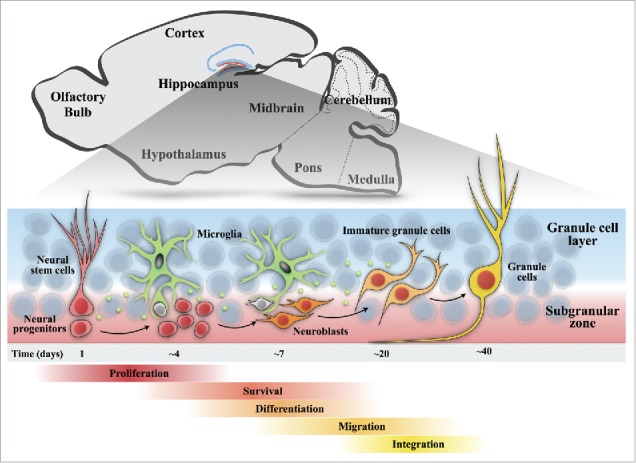Figure 1.

Schematic diagram of the process of adult neurogenesis in the hippocampus. A sagittal view of an adult rodent brain highlighting the dentate neurogenic niche. In the adult dentate gyrus, neurogenesis undergoes 5 continuous stages. Stage 1, proliferation: amplifying neural progenitors are generated from the neural stem cells with their cell bodies located within the subgranular zone and radial processes projecting through the granular cell layer. Stage 2, survival: a large proportion of progenitors undergoes apoptotic death (gray) in the early period of their life. Stage 3, differentiation: progenitors differentiate into immature neurons (orange). Stage 4, migration: immature neurons migrate a short distance into the granule cell layer. Stage 5, integration: new granule cells (yellow) receive inputs from the entorhinal cortex and send axons to synapse CA3 and hilar neurons. In each stage of neurogenesis, surveillant microglia regulate the fate and development of newborn neurons via the engulfment of apoptotic cells (Sierra et al., 2012) and secreting inflammatory and growth factors, such as IL-1β,19 TGF, PDGF, EGF and BDNF26,57.
